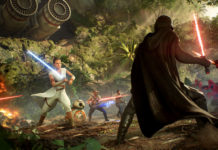
You may not realize it, but Nintendo was actually making plans for a follow-up to their initially maligned The Legend of Zelda: The Wind Waker. Despite early gripes about a cel-shaded art style, Wind Waker went on to be a very successful Zelda game in its own right. However, there was no escaping the giant that was live-action Fantasy movies at the time, and the doubts over the cartoony art style would not survive a second time on Nintendo's home console.
On February 21st, 2017, Nintendo is releasing a book called The Legend of Zelda: Art & Artifacts, and in it is the story behind the demise of The Wind Waker 2. There were many reasons for why The Wind Waker 2 never saw the light of day, but on the plus side, it was shelved so that the company could go into production on Twilight Princess. It's hard to argue that being the wrong call, don't you think?
Here's an excerpt from the book translated by Nintendo Everything:
Realistic Link came back four years after Wind Waker in Twilight Princess, which was released on GameCube and Wii. The pendulum returned again to the realistic direction, but what kind of circumstances resulted in it?Takizawa: To tell you the truth, we had begun the initial steps towards creating Wind Waker 2 around that time. However, demand for a more Ocarina-like game was growing by the day. We did our very best with Wind Waker, and put everything we had into it…Takizawa: However, Wind Waker 2 would have taken place in a more land-based setting, rather than on the sea, so that we could have Link gallop across the land on a horse. But Link’s proportions in Wind Waker weren’t very well suited for riding on horseback, he was too short, and an adult version of Toon Link did not seem appropriate either. So, while we were stuck on those problems, we became aware of the greater demand for a more realistic, taller Link. High-budget live-action fantasy movies were also huge at the time, so with all things considered, we decided to have at it. I was on board with the project as art director, and started off by bringing [Yusuke] Nakano on to do the design for Link.







